Cancun’s Underwater Museum, also known as the Museo Subacuático de Arte (MUSA). is a non-profit organization located in Cancun, Mexico, and is committed to the art of conservation. It holds over 500 sculptures from artists such as Jason deCaires Taylor, Karen Salinas Martinez, Roberto Diaz Abraham, Rodrigo Quinones Reyes, Salvador Quiroz Ennis, and Elier Amado Gil. The museum consists of three separate galleries immersed deep in the ocean at the Cancun National Marine Park, making it the largest underwater exhibition in the world. The museum was founded by Jamie Gonzalez Canto, Director of Marine Park, to protect the surrounding coral reefs by creating an alternate destination for divers and tourists. The Underwater Museum formally opened to divers in November 2010.
MUSA is an incredible experience that promotes art as well as the importance of coral reefs. At a time when natural coral reefs are disappearing more rapidly than ever, this exhibition informs visitors of the need and urgency to protect oceans and marine life. It offers the ideal ecosystem for aquatic life to continue breeding and flourishing, as each sculpture is constructed using specialized materials capable of fostering coral growth. Each sculpture in the museum has unique elements tailored to provide a healthy environment for the aquatic life around it. Today the museum is a dynamic coral system for aquatic life to colonize, inhabit, and generate biomass on a wide scale.
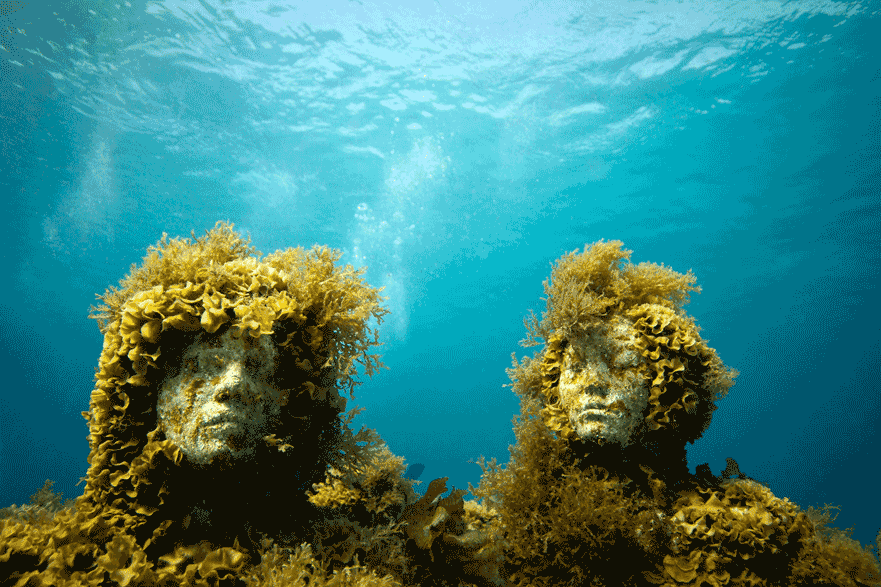
The installation includes a distinct mix of statues ranging from themes such as capital greed to the simple, holistic life of the fishermen community. One of the most distinct sculptures located at the MUSA is the Anthropocene. The Anthropocene is a sculpture of a Volkswagen Beetle with a mournful boy lying atop the windshield. The nine-tonne sculpture is intended to create a sanctuary for crustaceans, and it’s concrete walls prevent local fishermen from harvesting them. The holes on the side of the car allow the shellfish to enter the sculpture, and the interior is lined with shelving units where the creatures can sleep. The piece questions the kind of world that is being left to future generations, and how it harms not only generations to come, but also the role and continuation of aquatic life.
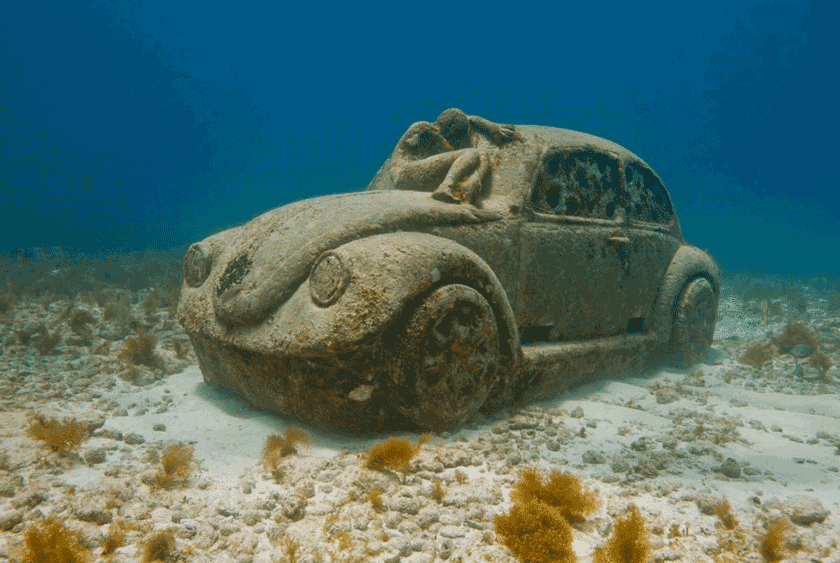
The Bankers is an innovative sculpture created by Jason deCaires Taylor using pH neutral cement to encourage ocean restoration and counter the threats of climate change. The Bankers is a symbol of how little humans look towards the future and how focused they are on short-term gain. Each sculpture is in a prayer position to indicate how monetary objects have been replaced as their “god”. Every banker in the sculpture also has a cavity on his backside for marine life, such as crustaceans and eels, to occupy. The installation represents the acknowledgment made about climate change in conferences but how little corrective action has been taken on the matter. Many environmental concerns currently emerge from consumer attitudes and choices, highlighting the need to recognize the effect of those attitudes in order to better change consumption habits.
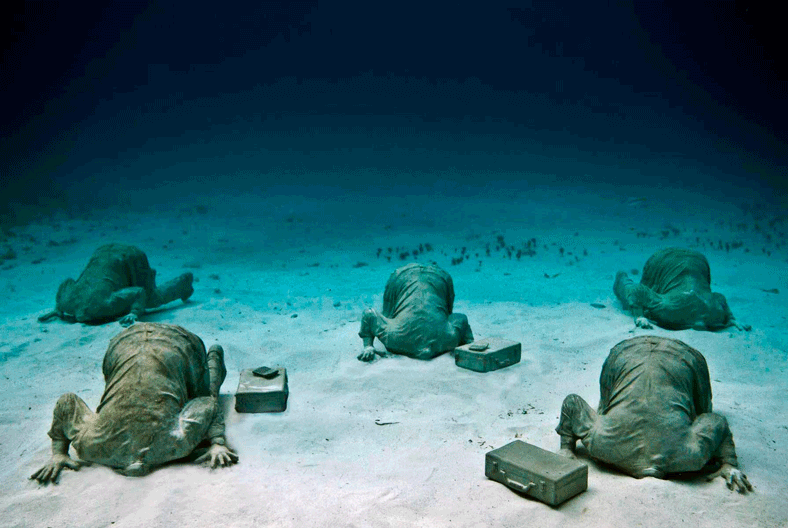
The Silent Evolution is one of the most celebrated works in the museum. The piece contains 400 individual statues of real-life models from a nearby fishing village in Puerto Morelos, mounting an army gathering in defence of the oceans. Every piece is manufactured using fiberglass and concrete with a neutrally based pH-value in order to attract marine life. The man-made reef is currently populated by more than 2,000 corals. This artwork has facilitated an important convergence of art and environmental awareness. It has created a hopeful and promising state amid the despair caused by the lack of environmental protection.
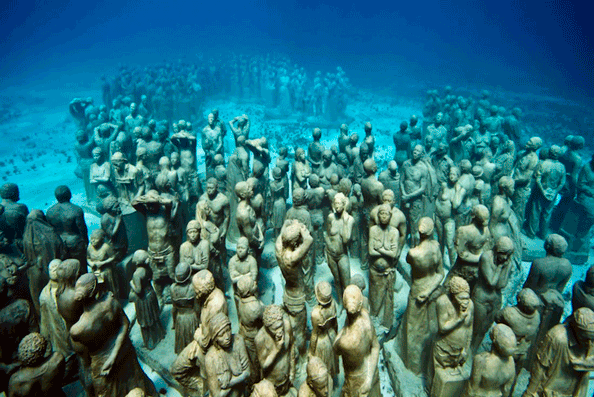
Every sculpture in the MUSA is intended to help preserve and appreciate marine life. The Ear is a piece mounted with a hydrophone and hard drive that helps researchers study aquatic life through sounds. Installations like Deregulated further call attention to the role of corporations and governments in environmental stewardship, highlighting the need for more environmental conservation efforts. The MUSA consists of hundreds of sculptures modeled after the local Mexican community. The engagement of the community emphasizes the value of the oceans as a means of sustenance and economic well-being for individuals all over the world. The work of these artists draws attention to the ongoing threats to aquatic health and the need for proper regulations.
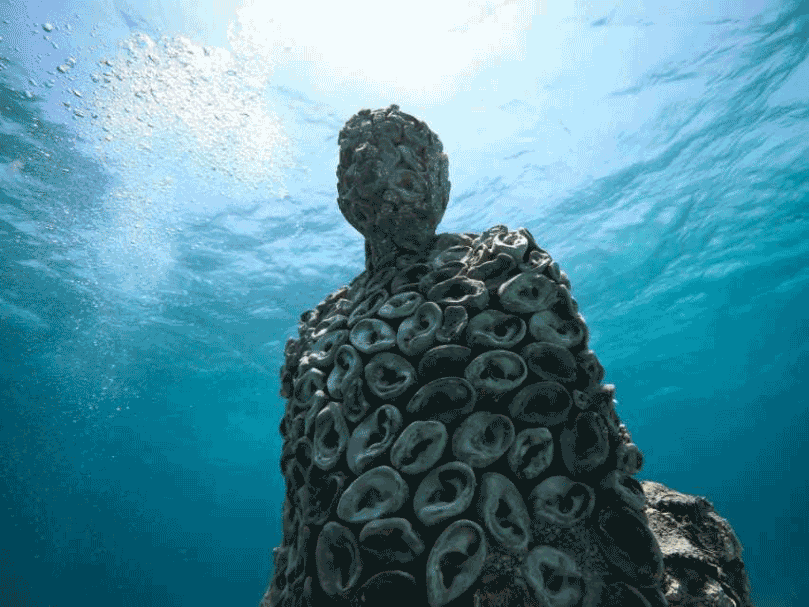
Since the installation of MUSA in 2009, reef development has covered the sculptures and has attracted fish, turtles, rays, and other marine life. The artists hope that someday the sculptures themselves will become unrecognizable when they are covered by algae and coral growth, making it an utterly stunning sight.
